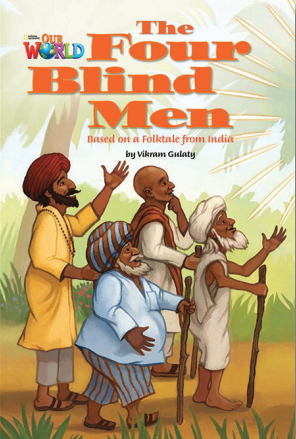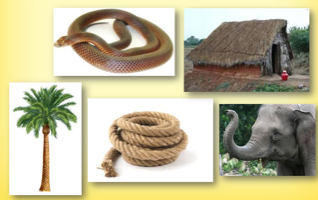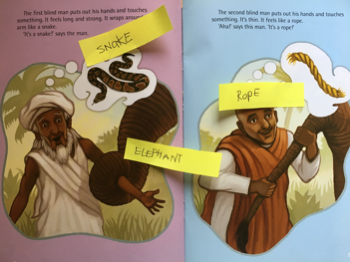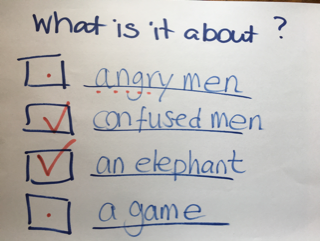In this post, we are going to look at how we can use the images in the Our World Readers and see how these images can be a stimulus for developmentally appropriate writing work. The Our World readers are available in six levels and are based on original stories, folk tales, myths and non-fiction stories from around the world. You can find a downloadable teacher instruction sheet with a variety of activities for each reader online.
The Importance of Reading
Reading is often used to reinforce language, such as newly taught vocabulary and grammar, but also to develop an understanding of the world around us. Our World readers support the language that is covered in the Our World student books but also try to encourage reading for pleasure by providing level-appropriate reading accompanied by colorful illustrations.
Our World readers bring stories from a wide variety of cultures into the young learner classroom and will open learners’ eyes to the different cultures around them. The readers aim to develop cultural knowledge as well as critical thinking. Whereas the stories come from different countries, learners will quickly notice that many different cultures have similar stories with similar values, like being grateful for small things, the importance of friendship and myths about the origin of mountains, rivers, and the land.
In our social age, the ability to read has become more or less a basic requirement to be able to actively take part in society and be an active citizen. Richards (2016) states that the ability to read effectively is critical in order to extend learners’ knowledge. Interestingly, the younger generation might read more than we think, but maybe not in the same form as we are used to; online, blogs, Instagram adverts, Snap Chat comments, tweets, etc. So without effective reading skills, our learners will miss out on a lot of activity that’s going on around them! Therefore, we need to actively develop reading skills and one of the best ways to become an avid reader; is reading, reading, and more reading!
One of my favorite stories in the young learner classroom is The four blind men, based on a folk tale from India. It has got some fabulous images that can really trigger the reader’s imagination!

In the pre-reading stage, we either need to pre-teach key lexical items or at least check if students know the meaning of the words. I like lifting the images off the page, you can take a photo of them or you can find a similar image free of copyright on pixabay.com or unsplash.com. I slowly reveal the images on a slide and get students to write down what each picture shows, if they know it, on a small, separate sticky note.


Once we have established the word, spelling, etc. you can further develop their repertoire of adjectives by asking what the items feel like; soft, hard, rough, smooth. I then get them to open their readers and look for the images in the story as quickly as they can and stick the words in. This is a way to quickly get students to glance over the story and conduct a ‘picture walk.’

Then get students to talk and predict what they think the story might be about.
• Get them on their own to think about what they think will happen in the story. (Think)
• Get them to turn to their elbow buddy and decide who starts sharing what they think (Pair)
• Then get them to turn to their back-buddies and get them to share what each team talked about (re-pair) before you elicit some of the learners’ predictions onto the whiteboard.

Learners then read the story alone or in guided reading groups, depending on the aim of the reading session, to check their predictions. Looking at the downloadable teacher instruction sheet there are some questions students can ask each other about the text.
Fact Tennis
The next time we meet I get them to return to the reader and retell the story in a more active way through Fact Tennis:
- Pair your learners
- Set a time limit (1 or 2 minutes depending how much information there is in the story)
- learner A ‘serves’ a fact/ something they remember about the story
- Then learner B ‘returns’ another fact/something they remember about the story
- Next, A gives another fact and so on.
- For each fact, the learner gets a point
- The winner is the one with the most points when you call time
Then we return to the text for one more activity, this time we are going to work on writing. I prepare 5 or 6 incorrect sentences that capture the main event on each page. I might focus on using incorrect vocabulary or inaccurate grammar or spelling, it really depends on your aim and the common errors learners display. I show the sentences one by one and learners need to error correct, writing an accurate sentence that reflects the story. If they can’t recall the correct word/ spelling etc, they can return to their reader and check quickly. This is a great way to work on quick reading for specific information. Learners peer-check answers before whole class feedback. From here you can take it in different directions. For example, you can get them to think about linking the sentence together in a nice paragraph, e.g. provide a summary of the main events in the story. Working on linking words is an option or you could get students to rewrite the story replacing the elephant with an animal that is common in their country.
I hope we have given you some simple ideas to exploit images that you can apply to any reader with rich images. If you have any other engaging activities to exploit images in readers in the young learner classroom feel free to share these in the comments box below. Happy reading!
References:
Readers from Welcome to Our World & Our World series
Richards, J. (2015) Key issues in Language Teaching. CUP


